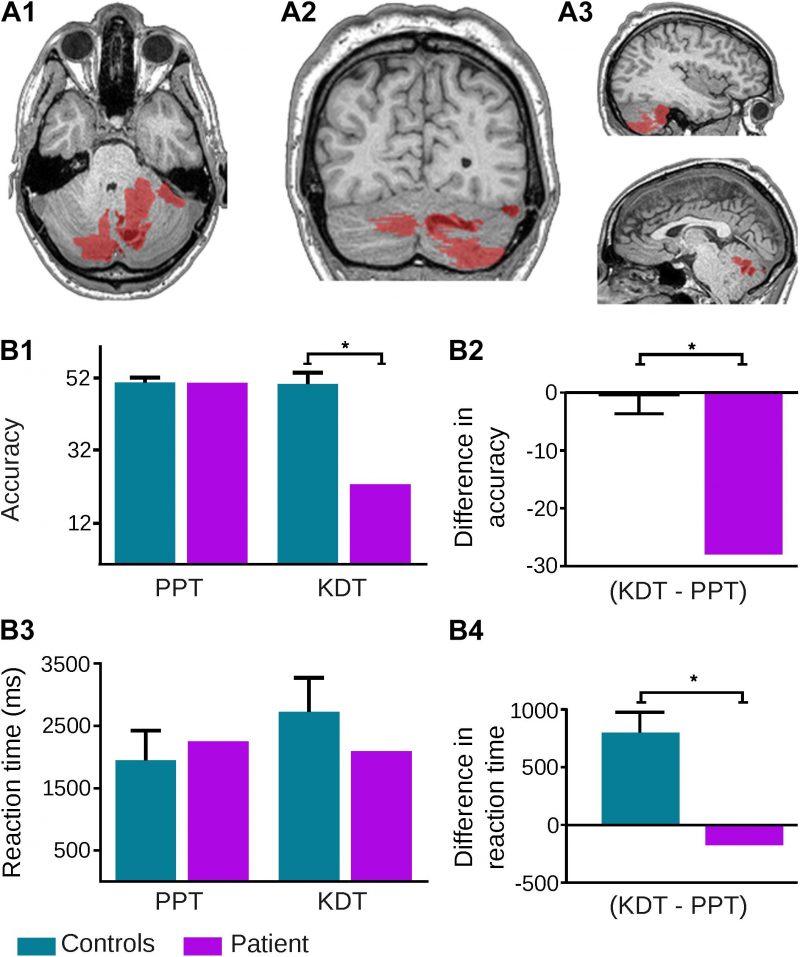Abstract:
Recent embodied cognition research shows that access to action verbs in shallow-processing tasks becomes selectively compromised upon atrophy of the cerebellum, a critical motor region. Here we assessed whether cerebellar damage also disturbs explicit semantic processing of action pictures and its integration with ongoing motor responses. We evaluated a cognitively preserved 33-year-old man with severe dysplastic cerebellar gangliocytoma (Lhermitte-Duclos disease), encompassing most of the right cerebellum and the posterior part of the left cerebellum. The patient and eight healthy controls completed two semantic association tasks (involving pictures of objects and actions, respectively) that required motor responses. Accuracy results via Crawford’s modified t-tests revealed that the patient was selectively impaired in action association. Moreover, reaction-time analysis through Crawford’s Revised Standardized Difference Test showed that, while processing of action concepts involved slower manual responses in controls, no such effect was observed in the patient, suggesting that motor-semantic integration¿ dynamics may be compromised following cerebellar damage. Notably, a Bayesian Test for a Deficit allowing for Covariates revealed that these patterns remained after covarying for executive performance, indicating that they were not secondary to extra-linguistic impairments. Taken together, our results extend incipient findings on the embodied functions of the cerebellum, offering unprecedented evidence of its crucial role in processing non-verbal action meanings and integrating them with concomitant movements. These findings illuminate the relatively unexplored semantic functions of this region while calling for extensions of motor cognition models.


